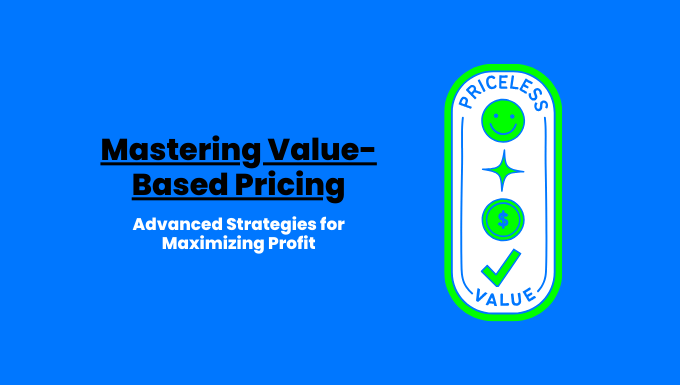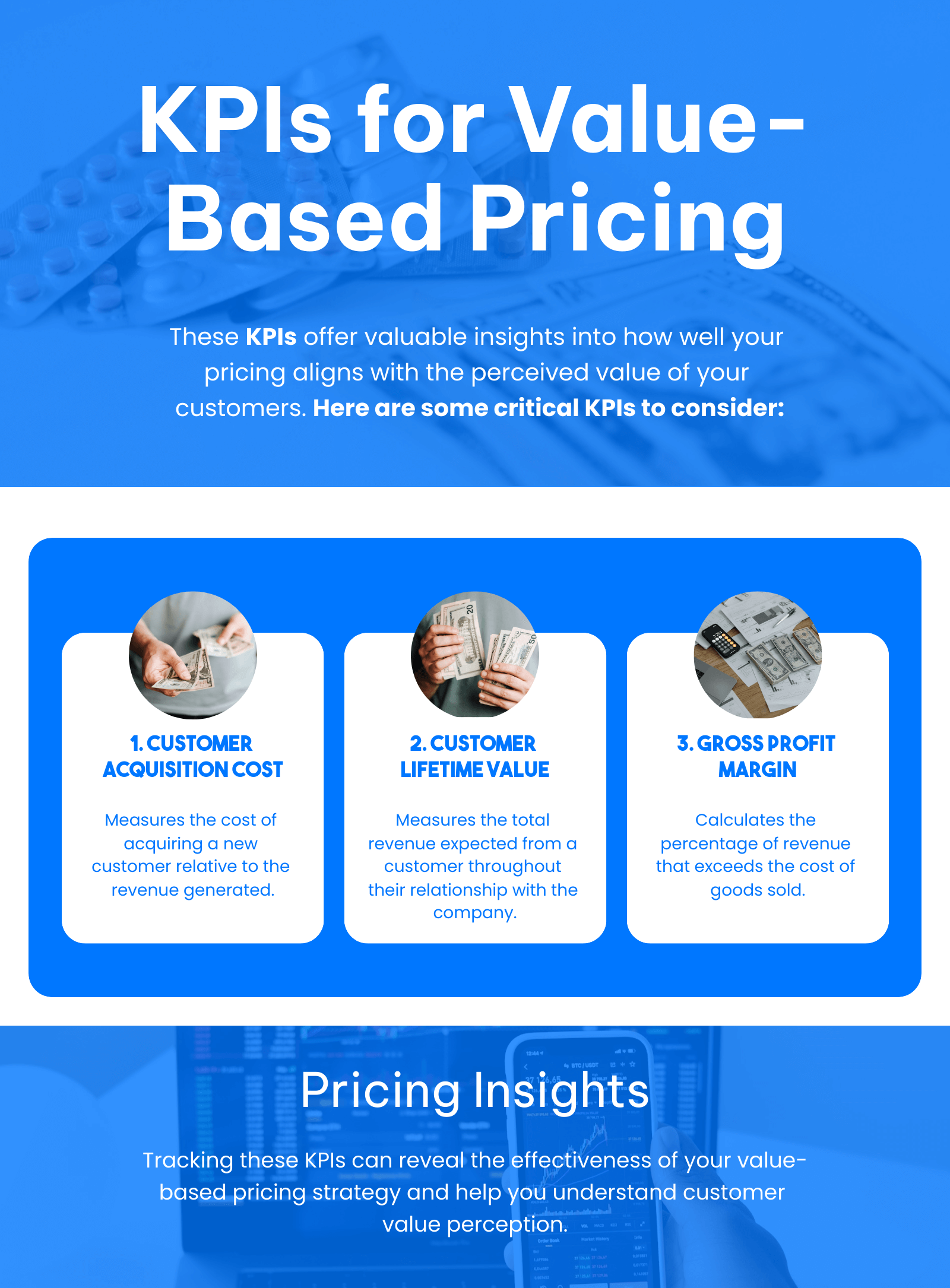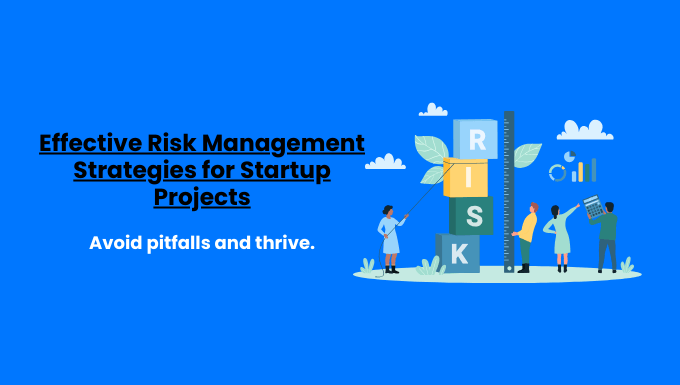Imagine charging what your product is truly worth, not just what it costs to make.
Value-based pricing revolutionizes how businesses set prices, focusing on customer perception rather than production costs.
By understanding and leveraging the value customers see in your offerings, you can boost profits and outshine competitors.
Dive into the world of value-based pricing, including its definition, core principles, and importance in today’s market, and transform your business pricing strategy today.
Key Takeaways:
- Value-based pricing sets prices based on customer-perceived value, not just costs.
- Implement market research and customer segmentation to understand value perceptions.
- Use dynamic pricing and tiered models to optimize profit and meet diverse customer needs.
- Overcome challenges by clearly communicating your value proposition.
- Stay agile and invest in technology to adapt to future pricing trends.

Contents
ToggleUnderstanding Value-Based Pricing
Value-based pricing is a pricing strategy where prices are determined based on the perceived value of a product or service to the customer, rather than the cost of production.
Essentially, it involves pricing your offerings according to what your customers are willing to pay, taking into account the benefits and value they receive.
In today’s competitive business landscape, where customers have access to numerous options, value-based pricing plays a pivotal role in setting your business apart from the competition by ensuring the pricing reflects the value of the product to customers.
By aligning your prices with the value you provide to your customers, you can not only increase profitability but also foster stronger customer relationships and loyalty.
Traditional Pricing Methods vs. Value-Based Pricing
Traditional pricing methods, such as cost-plus pricing or competitor-based pricing, typically focus on internal factors like production costs or external factors like competitor pricing.
While these methods have their place, they often overlook the most critical aspect of pricing: the value perceived by customers.
Key Milestones in the Evolution of Pricing Strategies
Over the years, pricing strategies have evolved to prioritize the customer’s perception of value. Companies like Apple and Starbucks have successfully implemented value-based pricing, setting prices based on the unique value their products offer to customers, rather than solely covering costs.
From the early days of fixed pricing to the emergence of dynamic pricing models, the pricing landscape has witnessed significant shifts towards a customer-centric approach.
Value-based pricing has emerged as a potent tool for businesses to capture the true worth of their offerings in the eyes of their customers.
Unlocking the Power of Value-Based Pricing for Your Business
In the competitive landscape of business, pricing is a pivotal factor in determining the success of a product or service.
While cost-based pricing has been a conventional approach, more entrepreneurs are now embracing value-based pricing to better align their offerings with customer expectations and maximize profitability.
So, what are the core principles of value-based pricing that can help you position your pricing effectively and drive business growth?
Let’s delve into the key aspects of customer-perceived value and aligning price with value.
Customer Perceived Value
Understanding and measuring customer-perceived value is crucial for implementing a successful value-based pricing strategy.
Customer perceived value refers to the worth that a customer attributes to a product or service based on their needs, preferences, and the benefits they expect to receive.
Here’s how you can assess and measure customer perceived value effectively:
- Market Research: Conduct thorough market research to gain insights into customer preferences, pain points, and what they value in a product or service.
- Surveys and Feedback: Engage with your target audience through surveys, feedback forms, and interviews to gather direct feedback on what they consider valuable.
- Competitor Analysis: Analyze competitor offerings and pricing strategies to understand how customers perceive value in the market.
- Value Proposition: Clearly communicate the unique value proposition of your product or service to customers to enhance their perception of value.
Tools and Techniques for Evaluating Customer Value
To quantify and evaluate customer perceived value, you can leverage various tools and techniques that provide valuable insights into customer preferences and willingness to pay.
Some effective tools and techniques include use the of value-based pricing for enhancing profitability.
- Conjoint Analysis: A statistical technique that helps in understanding how customers value different features of a product and their trade-offs.
- Value Mapping: Visual representation of the value elements that customers associate with a product or service, aiding in pricing decisions.
- Customer Lifetime Value (CLV): Calculating the long-term value that a customer brings to your business, guiding pricing strategies for customer retention and acquisition.
- Price Sensitivity Analysis: Assessing how changes in price impact customer demand and willingness to purchase, informing pricing adjustments with a focus on value pricing.
By actively assessing and measuring customer perceived value through these tools and techniques, you can gain valuable insights to inform your pricing strategy and enhance customer satisfaction.
Aligning Price with Value
Once you have a clear understanding of customer perceived value, the next step is to align your pricing strategy with the value you deliver to customers.
Aligning price with value involves setting prices that reflect the benefits and solutions your product or service offers, ensuring customers see the price as justified by the value received.
Here are some strategies for effectively aligning pricing with customer value, emphasizing the need to know about value-based pricing:
- Value-Based Segmentation: Segmenting customers based on their perceived value and willingness to pay, allowing for tailored pricing strategies for different customer segments, is essential for effectively using value-based pricing.
- Tiered Pricing: Offering different pricing tiers with varying features and benefits to appeal to customers with different value perceptions.
- Value Communication: Clearly articulating the value proposition of your product or service in marketing messages and pricing strategies to justify the price point.
- Dynamic Pricing: Adjusting prices based on fluctuations in demand, competitor pricing, and customer value perception to optimize revenue and profitability.
Case Studies of Successful Alignment
Numerous businesses have successfully aligned their pricing with customer value, leading to increased customer satisfaction and revenue growth.
For example:
- Apple: Apple’s premium pricing strategy for its products is aligned with the perceived value of innovation, design, and user experience, resonating with customers willing to pay a premium for these attributes.
- Amazon: Amazon’s dynamic pricing algorithm adjusts prices based on factors such as demand, competitor prices, and customer behavior, ensuring competitive pricing while maximizing revenue.
- Tesla: Tesla’s pricing strategy for electric vehicles reflects the value of sustainability, performance, and cutting-edge technology, attracting customers who prioritize these aspects in their purchasing decisions.
By studying these case studies and implementing strategies to align pricing with customer value, you can enhance the competitiveness of your business and drive sustainable growth.
Developing a Value-Based Pricing Strategy
In the competitive landscape of business, pricing, especially types of value-based pricing, is a critical factor in determining success, as it ensures that the price for a product aligns with the consumer’s perceived value.
One effective approach gaining popularity among businesses is value-based pricing. This strategy involves setting prices based on the perceived value to the customer rather than solely on production costs, a principle at the heart of value-based pricing is a strategy.
Let’s explore the key steps to develop a value-based pricing strategy that can distinguish your business from the competition.
Market Research and Customer Insights
Before implementing a value-based pricing strategy, conducting thorough market research and gathering valuable customer insights is essential.
Understanding your target market and their needs helps you determine the value they place on your products or services.
This information guides you in setting prices that align with the perceived value to the customer, essential in creating a value-based pricing strategy.
- Conducting effective market research: Utilize surveys, focus groups, and data analytics to gather insights into market trends, customer preferences, and pricing expectations.
- Gathering and utilizing customer insights: Engage with customers through feedback forms, reviews, and direct communication to understand their perception of value and willingness to pay.
Segmenting Your Market
Segmenting your market involves identifying and categorizing different customer groups based on factors such as demographics, behaviors, and purchasing patterns.
By segmenting your market, you can tailor your pricing strategies to meet the specific needs and preferences of each segment.
- Identifying and segmenting different customer groups: Divide your target market into distinct segments to better understand their unique requirements and value perceptions.
- Tailoring pricing strategies for each segment: Customize your pricing approach for each segment based on their willingness to pay, price sensitivity, and perceived value, a crucial aspect of value pricing.
Competitive Analysis
Analyzing your competitors’ pricing models is crucial for positioning your value-based pricing strategy effectively in the market, especially against competition-based pricing strategies.
Understanding how competitors price their products or services helps you differentiate your offerings based on value and stand out in the competitive landscape.
- Analyzing competitors’ pricing models: Research competitors’ pricing strategies, discounts, and value propositions to identify gaps and opportunities.
- Positioning your value-based pricing in a competitive landscape: Highlight the unique value your products or services offer compared to competitors and communicate this effectively to customers, applying good value pricing to stand out.
By following these key steps in developing a value-based pricing strategy, you can align your pricing with customer value, differentiate your offerings in the market, and ultimately drive business growth and profitability.
Embrace the power of value-based pricing to set your business on the path to success in today’s competitive business environment.
Implementing Value-Based Pricing Models
Are you ready to revolutionize your pricing strategy and boost your profits? Value-based pricing could be the game-changer you’ve been looking for to set the right price based on customer perception.
In this article, we’ll explore the world of value-based pricing, including various techniques, approaches, and the role of technology in implementing this innovative pricing model.
Let’s jump right in!
Pricing Techniques and Approaches
- Understanding Value-Based Pricing: Value-based pricing revolves around setting prices based on the perceived value of your product or service to the customer, rather than its production cost. By aligning your prices with the value your offering delivers to customers, you incorporate value-based pricing may help you capture a larger share of that value for your business.
- Dynamic Pricing: Dynamic pricing involves adjusting prices in real time based on market demand, competitor pricing, and other external factors. This approach allows you to optimize your prices for maximum profitability and competitiveness. For instance, airlines and SaaS companies frequently use dynamic pricing to tweak prices based on factors like seat availability, booking trends, or user engagement.
- Tiered Pricing: Tiered pricing entails offering different pricing tiers with varying features and benefits to cater to different customer segments, which can also pave the way for implementing a value-based pricing strategy by aligning the price with the value of the product to different customer tiers. This approach enables you to capture value from customers willing to pay more for premium features while also attracting price-sensitive customers with lower-tier options. A prime example of tiered pricing is the subscription models offered by streaming services like Netflix.
- Freemium Models: Freemium models offer a basic version of a product or service for free, with the option to upgrade to a paid premium version for additional features or functionality.
This approach allows you to attract a broad audience with a free offering and then convert a percentage of users into paying customers through upsells or premium features, effectively applying the principles of value-based pricing by incrementally increasing the perceived value of the product. Popular apps like Spotify and Dropbox have effectively implemented freemium models to drive user growth and monetization.
Technology and Tools for Value-Based Pricing
- Pricing Analysis Software: Leveraging technology is crucial for implementing and optimizing value-based pricing strategies. Pricing analysis software can help you gather and analyze data on customer preferences, competitor pricing, market trends, and more. By utilizing advanced analytics and algorithms, you can make data-driven pricing decisions that maximize your profitability and competitive advantage.
- Dynamic Pricing Tools: Dynamic pricing tools enable you to automate the process of adjusting prices based on real-time data and insights, integral for implementing value-added pricing strategies including those based on competition-based pricing.
These tools use algorithms to analyze market conditions, competitor pricing, and customer behavior, allowing you to set optimal prices that reflect the true value of your offering.
Companies like Amazon utilize dynamic pricing tools to adjust prices on millions of products every day, optimizing their revenue and market position.
Measuring and Optimizing Profit: A Guide for Business Owners
In the competitive world of business, mastering the art of measuring and optimizing profit is crucial for success.
As a business owner, understanding key performance indicators (KPIs) and implementing strategies for continuous improvement is essential to ensure that your pricing model is not only effective but also profitable.
Let’s explore these vital aspects to help you fine-tune your pricing strategy for maximum value and profitability.
Key Performance Indicators (KPIs) for Value-Based Pricing
When it comes to value-based pricing, focusing on specific key performance indicators is essential to evaluate the effectiveness of your pricing plan and understand the perceived value of the product to customers.

These KPIs offer valuable insights into how well your pricing aligns with the perceived value of your customers. Here are some critical KPIs to consider:
- Customer Acquisition Cost (CAC): This metric reveals the cost of acquiring a new customer relative to the revenue generated from that customer. A lower CAC indicates a more efficient pricing strategy, especially prominent in SaaS companies where value pricing plays a vital role, demonstrating that pricing also needs to reflect the added value to the customer to be effective.
- Customer Lifetime Value (CLV): CLV measures the total revenue expected from a customer throughout their entire relationship with your company. A higher CLV indicates that your pricing strategy is capturing long-term value from customers.
- Gross Profit Margin: This KPI calculates the percentage of revenue that exceeds the cost of goods sold. A healthy gross profit margin signifies that your pricing strategy is generating sufficient profit.
How to Track and Analyze These Metrics
Monitoring and analyzing these KPIs is crucial for making informed decisions about your pricing strategy.
Here’s how you can effectively track and analyze these metrics:
- Utilize a reliable analytics platform to track KPIs in real time and generate reports for analysis.
- Compare KPIs over different time periods to identify trends and patterns.
- Conduct A/B testing to evaluate the impact of pricing changes on key metrics.
- Gather feedback from customers to understand their perception of value and pricing.
Continuous Improvement Strategies
To optimize your pricing model for maximum profit, implementing strategies for continuous improvement is paramount. By embracing feedback loops and making iterative adjustments, you can refine your pricing strategy over time.
Here are some strategies to consider:
- Implementing a cost-plus pricing strategy, exploring the pros and cons of value-based pricing, and tailoring your approach to create a value-based pricing strategy.
- Regularly review and update pricing based on market dynamics and customer feedback to stay agile.
- Monitor competitor pricing strategies to ensure competitiveness while highlighting the unique value you offer.
- Implement dynamic pricing strategies to adjust prices in real time based on demand, seasonality, and other factors, a tactic especially useful in SaaS models.
- Enhance your offerings with value-added services to justify premium pricing and distinguish your brand in the market.
By incorporating these strategies and focusing on key performance indicators, you can optimize your pricing model for profitability and sustainable growth.
Remember, pricing is an ongoing process of refinement and adaptation to meet the evolving needs of your business and customers. Stay proactive, stay responsive, and watch your profits soar!
Challenges and Solutions in Value-Based Pricing
In the realm of business, pricing stands as a pivotal element that can either catapult a product or service to success or lead it to failure, making it essential to know about value-based pricing.
A pricing approach that has been gaining momentum in recent times is value-based pricing, which focuses on determining the price based on the perceived value of the product to the customer rather than traditional cost-plus methods.
This strategy revolves around determining prices based on the perceived value of your offering to the customer, rather than solely considering production costs or competitor pricing. While value-based pricing can significantly enhance profits and customer satisfaction, it also presents its own set of challenges.
Let’s explore some common obstacles faced by businesses and delve into practical solutions to surmount them.
Common Challenges
One of the primary challenges encountered by businesses when embracing value-based pricing is evaluating the perceived value of their product or service accurately.
This task demands a profound understanding of customer needs, preferences, and their willingness to pay. Without precise data and insights, setting the optimal price can seem like an insurmountable hurdle.
Overcoming Challenges
To tackle the hurdles of value-based pricing effectively, businesses can implement the following strategies:
- Conduct Comprehensive Market Research: Gain insights into customer needs and preferences.
- Segment Customers Based on Value Perceptions: Tailor pricing strategies to different customer segments.
- Effectively Communicate Value Proposition: Justify pricing by clearly communicating the value offered to customers.
- Continuously Monitor and Adjust Pricing: Stay responsive to feedback and market dynamics to fine-tune pricing strategies.
By implementing these best practices, businesses can overcome the challenges associated with value-based pricing and propel profitability and growth.
Future Trends in Value-Based Pricing: Innovations and Market Adaptation
In the ever-evolving business landscape, pricing strategies are pivotal in determining success. For business owners, staying ahead requires an understanding of future trends in value-based pricing.
Let’s explore emerging trends, innovations, future outlooks, and strategies to adapt to market shifts effectively.
Emerging Trends: Innovations in Pricing Strategies
In today’s dynamic business environment, innovation and value-added pricing are key to thriving. Businesses must adapt their pricing strategies to align with changing consumer behaviors and market dynamics.
Here are some key emerging trends:
- Dynamic Pricing: Utilizing advanced algorithms and data analytics, businesses can implement dynamic pricing strategies that adjust prices in real time based on demand and competition. This personalized approach maximizes revenue and enhances customer satisfaction.
- Subscription-Based Pricing: The subscription model has gained popularity, offering customers convenience and businesses a steady revenue stream. By adopting subscription-based pricing, businesses can foster long-term customer relationships and ensure predictable cash flow.
- Value-Based Pricing: Shifting from traditional cost-plus pricing, value-based pricing focuses on the perceived value of a product or service to customers. By pricing based on customer needs and willingness to pay, businesses can increase profitability and foster customer loyalty.
- Freemium Model: Offering a basic version for free with premium features at a cost, the freemium model attracts a broad audience, showcases value, and converts free users into paying customers.
Future Outlook and Predictions
Looking ahead, the future of value-based pricing presents opportunities for businesses to innovate and differentiate themselves, especially in markets saturated with similar products.
Here are some predictions:
- By 2025, the global value-based pricing market is projected to reach $12.6 billion, driven by data-driven pricing strategies and the demand for personalized customer experiences.
- Artificial intelligence and machine learning will shape pricing strategies, enabling businesses to analyze data and optimize pricing decisions in real time, particularly for those employing use value-based pricing.
- Personalization will be crucial, with businesses leveraging customer data to tailor pricing, promotions, and offers to individual preferences.
Adapting to Market Changes: Preparing for Future Shifts
As the business landscape evolves, entrepreneurs must proactively anticipate and adapt to market changes.
Here are strategies to prepare for future shifts:
- Stay Agile: Foster an agile culture within your organization to respond quickly to market changes and customer needs.
- Invest in Technology: Utilize technologies like AI, data analytics, and pricing software to optimize pricing strategies and stay competitive.
- Monitor Competitors: Keep tabs on competitors’ pricing strategies and market positioning to identify opportunities and threats.
- Listen to Customers: Understand evolving customer needs through feedback and research to tailor pricing strategies to meet expectations.
People Also Asked
1. What is Value-Based Pricing and Why is it Important?
Value-based pricing is a strategic approach where the price of a product or service is determined by its perceived value to the customer rather than its production costs, making it crucial to understand the unique benefits of your product and service.
This method focuses on aligning prices with the value customers are willing to pay for the benefits they receive. By emphasizing the value delivered rather than the cost incurred, businesses can cater to customer preferences effectively.
2. How Can I Determine the Perceived Value of My Product or Service?
To implement a value-based pricing strategy successfully, understanding the perceived value of your offering from the customer’s perspective is crucial.
Consider the following factors:
- Conduct market research to gather insights on customer preferences and willingness to pay.
- Identify unique features that differentiate your offering from competitors, making your product and service appear more valuable.
- Evaluate the emotional and functional benefits provided by your product or service.
- Analyze competitors’ pricing strategies to assess your value proposition.
3. What are the Main Challenges in Implementing a Value-Based Pricing Strategy?
While value-based pricing offers benefits like increased profitability and customer satisfaction, it also presents challenges:
- Difficulty in quantifying perceived value accurately.
- Customer resistance to non-traditional pricing models.
- Internal alignment challenges among pricing, sales, marketing, and product development.
- Balancing value-based pricing with market dynamics and competition.
4. How Does Value-Based Pricing Differ from Cost-Plus Pricing?
Value-based pricing contrasts with cost-plus pricing, where prices are based on production costs plus a markup.
Key differences include:
- Cost-plus pricing focuses on covering costs and achieving profit margins, regardless of customer perception.
- Value-based pricing prioritizes customer value and sets prices accordingly, even if they exceed production costs.
5. What are Some Examples of Successful Value-Based Pricing in Different Industries?
Many companies have effectively implemented value-based pricing strategies:
- Apple: Prices products based on perceived value and brand image, an example of value-based pricing.
- Starbucks: Sets prices based on customer experience and loyalty.
- Tesla: Positions electric vehicles as high-value products, commanding premium prices, a clear example of value-based pricing, as the price for a product reflects its perceived value to consumers.







